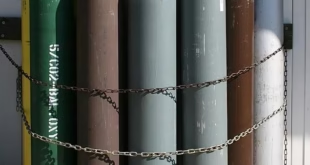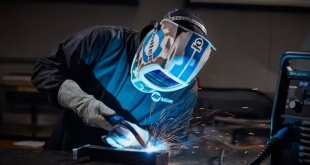Overhead Position Welding: Techniques, Challenges, and Best Practices
What Is Overhead Position Welding?
Overhead position welding is a challenging welding technique where the workpiece is located above the welder, and the weld is performed from the underside of the joint. Unlike flat or horizontal welding, the molten metal must be skillfully controlled against gravity. It is often considered one of the most difficult positions to master due to the risk of molten metal dripping, defects, and physical strain.
Importance of Mastering the Overhead Welding Position
Why is overhead welding so important? Because in many industrial scenarios—shipbuilding, pipeline repair, structural construction—there’s no turning the workpiece over. The ability to weld overhead ensures that a welder can handle real-world tasks where perfect conditions are impossible. It’s also a prerequisite for many advanced welding certifications.

Understanding Welding Positions
Overview of the Four Main Welding Positions
Welding positions are classified into four main types: flat (1G/1F), horizontal (2G/2F), vertical (3G/3F), and overhead (4G/4F). These classifications apply across different welding processes. Overhead welding (4G or 4F) is typically the final skill learned in structural and pipe welding training programs.
What Makes the Overhead Position Unique and Difficult?
The overhead position defies gravity. The welder must work underneath the joint, which means molten metal has a natural tendency to drip. This adds risk, not only to the weld quality but also to the welder’s safety. Add in awkward posture, visibility challenges, and the need for perfect heat control, and you get one of the most skill-intensive welding tasks.
Welding Processes Used in the Overhead Position
Shielded Metal Arc Welding (SMAW)
SMAW, or stick welding, is one of the most common processes for overhead welding. It’s preferred in outdoor or field environments because of its portability and ability to handle rusty or painted surfaces.
Recommended Electrodes and Settings
For overhead SMAW, low-hydrogen electrodes like E7018 or E6010 are commonly used. Short arc lengths, lower amperage, and quick manipulation are key. Electrode angles should be between 5–15° to avoid dripping slag.
Gas Metal Arc Welding (GMAW / MIG)
MIG welding offers speed and efficiency but is more challenging in overhead due to fluidity of the weld pool.
Wire Feed Speed and Voltage Settings
A lower wire feed speed and voltage help control the molten pool. Use short-circuit transfer for better positional control. Keep the gun at a tight angle (around 10° push) and minimize weaving.
Flux-Cored Arc Welding (FCAW)
Flux-cored welding shines in overhead applications because its slag helps support the weld pool. It offers deeper penetration and high deposition rates.
Benefits in Overhead Applications
Self-shielded flux core wires (FCAW-S) are preferred for their portability. They also provide better control of the molten metal, reducing the chance of spatter and undercutting.
Gas Tungsten Arc Welding (GTAW / TIG)
TIG welding is rarely used overhead unless for thin materials or specialized applications. It demands precise coordination between both hands, torch angle, and filler rod manipulation.
Limited Use and Special Techniques
When TIG is used overhead, pulsing is beneficial to minimize heat input. Short arc lengths and tight control are essential, and a foot pedal is often replaced by fingertip controls for better mobility.
Equipment and Gear for Overhead Welding
PPE Essentials for Safety
Because gravity is working against you, sparks and slag fall downward—right onto you. A full-cover flame-resistant jacket, leather gloves, spats, and a helmet with good neck protection are critical.
Welding Machines and Parameters
Inverter-based machines with adjustable settings are ideal. Ensure fine control over voltage, amperage, and inductance to handle the positional difficulty of overhead welding.
Tools for Joint Preparation and Stability
Joint prep is half the battle. Use wire brushes, grinders, and clamps to clean and fix the joint in place. A stable joint reduces your mental load during welding.
Joint Types and Positions in Overhead Welding
Butt Joints in Overhead Position
These joints require root passes that don’t sag. Use stringer beads, and make sure to keep a tight arc. Multiple passes may be necessary to fill the groove completely.
Fillet Welds and Their Challenges
T-joints are common in overhead applications. Fillet welds tend to sag if too much heat is applied. Use a triangular manipulation and let the slag cool slightly before layering.
Lap and T-Joints in Overhead Setup
Lap joints need precise heat control to avoid burn-through. Position the torch or electrode to direct the heat into the thicker base metal whenever possible.
Challenges of Overhead Position Welding
Gravity and Molten Metal Control
The most fundamental challenge: molten metal wants to fall. You must adjust amperage, arc length, and electrode angle constantly to counteract gravity’s pull.
Risk of Burn-Through and Incomplete Fusion
Too much heat = burn-through. Too little = incomplete fusion. This balance is more delicate in overhead welding, especially on thinner materials.
Increased Fatigue and Ergonomics
Neck strain, shoulder fatigue, and awkward hand positioning all take a toll. Frequent breaks, ergonomic stances, and well-positioned workpieces help manage this.
Techniques for Successful Overhead Welding
Electrode Angle and Travel Speed
Use a slightly forehand or push angle to keep slag behind the arc. Travel quickly but steadily—slow travel invites excessive buildup and sagging.
Manipulation and Weaving Patterns
Tight stringers or small circular weaves work best. Avoid wide weaves—they lead to sag and defects. Let the slag cool a second before placing a new bead over it.
Short Arc vs. Spray Arc Control
Short arc (in MIG/FCAW) is preferred because it solidifies quickly. Spray arc is typically not recommended unless on thick plate with excellent overhead control.
Defects Common in Overhead Welding
Undercut, Porosity, and Spatter
Undercut occurs when excessive heat eats into the base metal. Porosity stems from contaminants or improper shielding. Spatter is almost unavoidable but manageable with correct settings.
How to Detect and Correct These Defects
Visual inspection, bend tests, and x-ray or ultrasonic testing can expose internal flaws. Corrections include grinding, rewelding, or adjusting settings and techniques.
Training and Skill Development
Practice Routines and Exercises
Start with flat practice, then move to horizontal and vertical before attempting overhead. Use scrap pieces to simulate joints and repeat until consistent.
Certifications and Welding Tests (3G & 4G)
Overhead welding is required for passing 3G and 4G welding tests, especially in structural welding and pressure vessel certification exams. Mastery opens doors to higher-paying jobs and specialty positions.
Safety Considerations in Overhead Welding
Heat, Slag, and Falling Debris
Slag and sparks can cause serious burns or ignite flammable clothing. Always wear proper PPE, and keep a fire extinguisher nearby.
Fire Prevention and Workspace Setup
Remove all flammable materials from the area. Use fire-resistant blankets to cover surfaces and maintain good ventilation. Welding curtains help protect bystanders.
FAQs
What is the hardest part of overhead welding?
Controlling the molten weld pool against gravity without causing sagging or burn-through is the most difficult aspect.
Can beginners learn overhead welding easily?
It’s not typically easy for beginners, but with a progression from flat to vertical to overhead, consistent practice can make it achievable.
What is the best electrode for overhead SMAW?
Low-hydrogen electrodes like E7018 or cellulose-based E6010 are most effective, depending on the joint type and position.
How do you prevent weld defects in overhead positions?
Control heat input, maintain correct travel speed and angle, and use proper cleaning and joint prep techniques.
Is overhead welding required in pipe welding jobs?
Yes, especially in all-position pipe welds, overhead techniques are essential for completing 5G and 6G positions.
Conclusion
Overhead position welding is one of the most demanding skills in the welding world. It combines technical precision, physical endurance, and safety awareness into one difficult package. However, with the right training, gear, and mindset, a welder can master this craft and unlock high-paying, high-responsibility opportunities in industries ranging from construction to shipbuilding. Whether you’re chasing certification or job readiness, overhead welding is a skill worth perfecting.
 Welding of Welders All about Welding and Welders
Welding of Welders All about Welding and Welders



